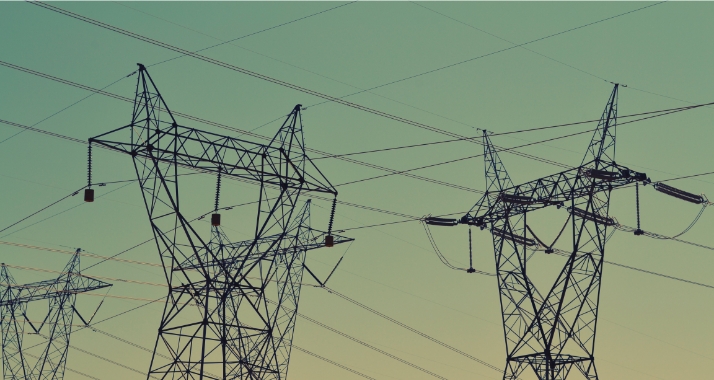To safely provide our members exceptional, courteous, and reliable services at a competitive cost.
Where We Stand
Community Electric Cooperative (CEC) was built by and belongs to the diverse communities and consumer-members we serve.
We are founded on 7 principles that set us apart from other businesses. Concern for community and the open, democratic structure of co-ops are two of these core principles. With these foundational concepts in mind, we strive to serve our communities and work to enhance quality of life for our consumer-members.
Social Justice
As an employer we are committed to a positive, inclusive culture.
We support policies that foster employee growth and success without fear of discrimination.
The ongoing conversation about racism and other inequities demands that we recognize how we can contribute to a more transparent, fair and accountable society. CEC, its leadership and employees are expected to play a leadership role in rejecting racism, speaking against injustice, and demonstrating the value of diversity, equity and inclusion.

Environmental Justice
CEC believes that environmental, wildlife and land management policies should encourage flexible, local approaches rather than imposing costly rules that discourage innovation.
We favor policies that rely more on providing incentives and encouraging voluntary conservation efforts. CEC’s operations, from operating power to trimming trees near power lines, are impacted by environmental policy.
Federal policies should provide necessary protections as well as maintain flexibility to recognize the crucial role that co-ops play in bringing reliable, affordable and responsible power to rural businesses and households.
Co-ops across the country, including CEC, are committed to meeting environmental requirements in a cost-effective manner.
Given that electric co-ops serve members in 92% of our nation’s persistent poverty counties, we also seek to minimize the financial impacts of these requirements on our most vulnerable consumer-members.
The cost of meeting environmental requirements has a disproportionate impact on low- and moderate-income consumer-members. Higher power costs also hurt local businesses in rural communities, causing job loss and slowing economic development.
Our Values
To consistently operate in an honest and transparent manner, exhibiting the utmost highest level of integrity, throughout the entire organization.
Integrity
Providing quality service by being honest, transparent, responsible, and ethical in all that we do, making sure our actions always match our words.
Accountability
Honoring each person as an individual, and recognizing our responsibility to be mindful of the impact our actions will have on today and tomorrow.
Innovation
Leveraging technology to offer our members auxiliary service and improved energy reliability.
Community
Showing compassion and concern for our members and communities we serve.
Safety
Ensure safe work practices by adhering to regulations and codes, protecting employees and the public, and taking personal responsibility for the safety of others.
Cooperative Principles
Voluntary & Open Membership
Cooperatives are voluntary organizations, open to all persons able to use their services and willing to accept the responsibilities of membership, without gender, social, racial, political or religious discrimination.
Democratic Member Control
Cooperatives are democratic organizations controlled by their members, who actively participate in setting policies and making decisions. The elected representatives are accountable to the membership. In primary cooperatives, members have equal voting rights (one member, one vote) and cooperatives at other levels are organized in a democratic manner.
Members' Economic Participation
Members contribute equitably to, and democratically control, the capital of their cooperative. At least part of that capital is usually the common property of the cooperative. Members usually receive limited compensation, if any, on capital subscribed as a condition of membership. Members allocate surpluses for any or all of the following purposes: developing the cooperative, possibly by setting up reserves, part of which at least would be indivisible; benefiting members in proportion to their transactions with the cooperative; and supporting other activities approved by the membership.
Autonomy & Independence
Cooperatives are autonomous, self-help organizations controlled by their members. If they enter into agreements with other organizations, including governments, or raise capital from external sources, they do so on terms that ensure democratic control by their members and maintain their cooperative autonomy.
Education, Training, & Information
Cooperatives provide education and training for their members, elected representatives, managers and employees so they can contribute effectively to the development of their cooperatives. They inform the general public, particularly young people and opinion leaders, about the nature and benefits of cooperation.
Cooperation Among Cooperatives
Cooperatives serve their members most effectively and strengthen the cooperative movement by working together through local, national, regional and international structures
Concern for Community
While focusing on member needs, cooperatives work for the sustainable development of their communities through policies accepted by their members.
Governance
Our History
1938
Community Electric Cooperative was created through the efforts of the Holland Ruritan Club and other community leaders to provide electrical service in Southeastern Virginia’s rural areas.
The late Paul L. Everett, a prominent attorney from Suffolk and a Holland Ruritan, led the effort to form the electric utility that today serves more than 9,500 families and businesses.
December 23, 1938
The Cooperative elected officers immediately after the Virginia State Corporation Commission granted its charter on December 23, 1938.
The Co-op’s first president was Louise F. Davidson.
October 1939
The Rural Electrification Administration granted Community Electric Cooperative a $220,000 loan in October of 1939.
A month later, construction was underway on the utility’s first 220 miles of line, running from Windsor into Nansemond County, which has since merged into the City of Suffolk.
1949 to 1955
Some 1,543 member-consumers turned out at the Co-op’s first outdoor annual meeting in Suffolk’s Peanut Park in 1949. Enthusiasm was high.
- With the post-war construction boom, Community Electric Cooperative rang in the New Year of 1950 with 2,451 meters, all having gone online within a decade and most after the war
- Construction continued to accelerate into the mid-1950s, with the number of services increasing by more than one-third, to 3,637, by 1955..
1959
The Cooperative reached a major financial milestone in 1955:
- For the first time, the utility achieved a year of operational margins.
- Capital credits totaling $26,705 were assigned to members.
- In 1959 the members received their first capital-credit refund checks.
1971
The Cooperative passed 1,000,000 man-hours without a lost-time accident.
The record represented one of the best in the nation at the time.
1975
By January of 1975, Community Electric Cooperative had installed some 5,875 meters and 1,111 miles of line.
1977+
James M. Reynolds was hired in 1977 by the Co-op board of directors to succeed Jean Woodward as manager.
Reynolds served until his retirement in April 2013.
Only the third CEO in its history, Steven A. Harmon took the helm in June 2013.
1979
Community Electric Cooperative executed a wholesale power contract with Old Dominion Electric Cooperative, a generation-and-transmission cooperative.
Initially, Old Dominion negotiated rates on behalf of Community Electric Cooperative and its other member systems.
1980+
During the 1980s and 1990s, Old Dominion procured ownership of electric-generation facilities to support Community Electric Cooperative and the 11 other cooperatives which own Old Dominion.
- In 1983, Old Dominion acquired an 11.6% interest in the North Anna Nuclear Power Station.
- Old Dominion also owns a 50% interest in the Clover Power Station, which it built, and went online in 1995.
- In addition to North Anna and Clover, Old Dominion has developed 3 peaking electric generation facilities to further support Community and the other 11 member cooperatives.
Today
Over the last 15 years, the Co-op has recorded a growth rate of roughly 1.5% per year in the number of meters connected.
The Cooperative currently serves more than 11,000 accounts over its 1,590 miles of distribution line.

